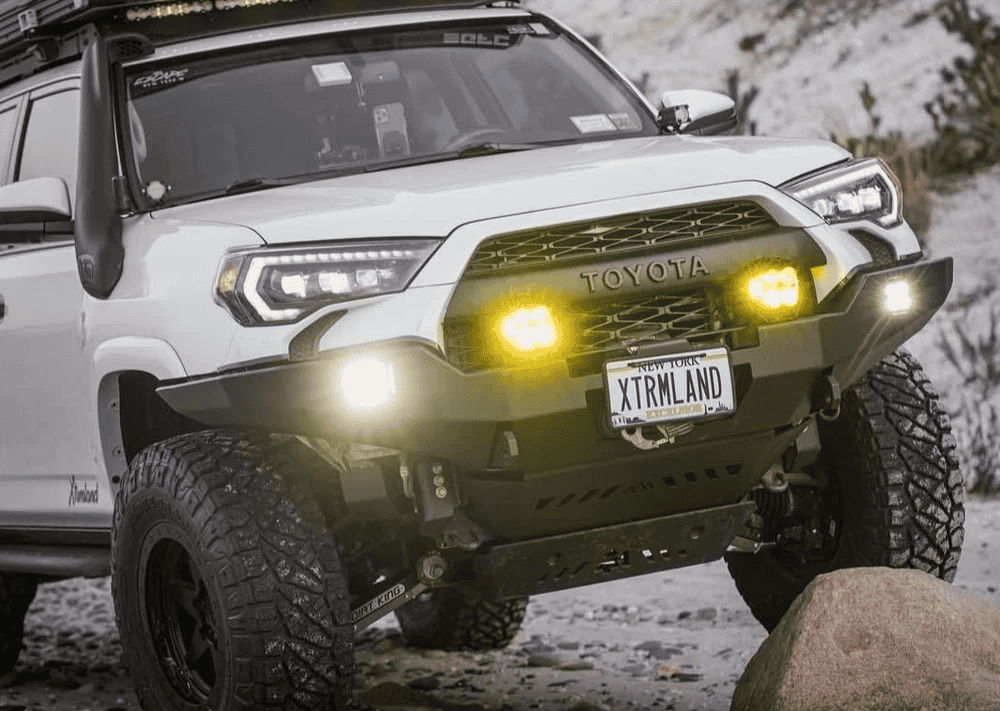Overland Vehicles

A skid plate is a sacrificial shield that takes the hit so vital components do not. It spreads impact energy across a larger area, prevents punctures, and keeps rocks from peeling open the oil pan, transmission case, or transfer case. Good plates also protect exhaust routing, crossmembers, and vulnerable wiring while preserving airflow to keep temperatures in check.
An effective system balances coverage with clearance. You want smooth transitions so the vehicle slides rather than snags. That means careful shaping around frame rails, a gentle leading ramp, and smart break angles that do not hurt approach or breakover. Builders must also plan for drainage, mud shedding, and snow release so the plate does not carry extra weight after a messy trail day.
Serviceability should be designed in from the start. Access windows for drain plugs, removable panels, and captured hardware make routine maintenance simple. A plate that blocks every fastener or plug will be ignored or removed, which defeats the point.
Start with risk zones: oil pan, transmission pan, transfer case, and fuel tank. Tie the plates together so edges overlap and loads transfer into the frame or factory mounts. High risk regions near the differential pumpkin or lower control arm mounts benefit from localized reinforcement without adding bulk.
Use a triangulated mount strategy to resist peeling forces. Reinforce factory holes with sleeves or backing plates where needed, and avoid thin sheet metal. Use corrosion resistant fasteners sized for the expected load, with thread treatment that matches your environment.
Material selection shapes everything. Steel offers excellent dent resistance and can be thinner for the same strength, which helps with packaging. Aluminum reduces weight and resists corrosion, but it needs more thickness and careful ribbing to avoid oil canning under repeated hits. For rocky trails that deliver sharp point loads, steel often makes sense. For sand and snow, aluminum can be great when shaped with ribs and flanges.
Thickness is not a vanity metric. Match it to vehicle weight, terrain, and impact frequency. Thicker material without structure can still bend, while thinner plate with strategic ribs and gussets can shrug off hits. Dimple features, formed channels, and boxed edges add stiffness without adding much mass.
Finishes do more than look clean. Zinc rich primers under powder, ceramic coatings near heat sources, or hard anodized aluminum slow corrosion and make cleanup easier. Isolation washers and dielectric coatings help mitigate galvanic interaction when aluminum meets steel, especially in wet climates.
Keep the bottom surface smooth so rocks glide. Use shallow ramps at the front and small kick ups at transitions. Carve in airflow lanes around catalytic converters and transmission coolers. Add drainage slots or small louvers where appropriate to dump water and mud without catching sticks.
The strongest plates start with accurate measurements. Many builders begin with cardboard templates, while advanced teams scan the underbody and design in CAD for tight tolerances. Precision cutting with plasma or waterjet reduces heat affected zones, and press brake forming creates consistent bends that add stiffness. Weld quality matters. Continuous seams where water intrusion is a concern, stitch welds where heat control and flexibility are preferred. After fabrication, dry fit and cycle suspension through its range to check for contact at full droop and compression.
Fastener strategy deserves attention. Use captured nuts or weld nuts where you cannot hold a wrench. Countersunk hardware keeps the bottom flush, but make sure the countersink depth leaves enough material. Add small guide tabs so reinstallation is painless after an oil change on a cold morning.
Testing is not a desk exercise. Drag it on ledges, tap it on steps, and then inspect for deflection, cracked paint, and hardware stretch. Small tweaks like a taller front lip or an extra rib can transform durability without much weight.
After hard trips, wash the underbody, check fastener torque, and look for coating damage. Touch up chipped coatings quickly to keep rust at bay. Replace any distorted hardware so removal stays predictable the next time you service the vehicle.
OZK Customs builds underbody armor as part of complete adventure vehicles and purpose built trail rigs. If your next trip calls for serious protection, see our Overland rigs to understand how armor integrates with suspension, tires, and recovery gear. For one off upgrades or a full protection package, our Custom overland upfit page outlines how we plan, fabricate, and install components that match your terrain and driving style. Curious how we work and why owners ship rigs from across the country? Start with Why choose OZK Customs.
Protecting the underside is not about a single plate. It is a system that considers airflow, service access, and the way your rig loads when it slides on rock or roots. Share your goals and we will design a skid package that fits your vehicle, your weight targets, and your trails. When you are ready, reach out and we will map the build, book your install, and send you out with armor you do not have to think about once the dirt begins.
Ready to protect your drivetrain with underbody armor built for real abuse? Tell us about your terrain, tire size, and powertrain layout, and we will spec, fabricate, and install a skid solution that fits your rig and your use case. Submit the form to get a tailored quote and a build timeline from the OZK Customs team.
ADDRESS:
6159 E Huntsville Rd, Fayetteville, AR 72701
PHONE:
(479) 326-9200
EMAIL:
info@ozkvans.com